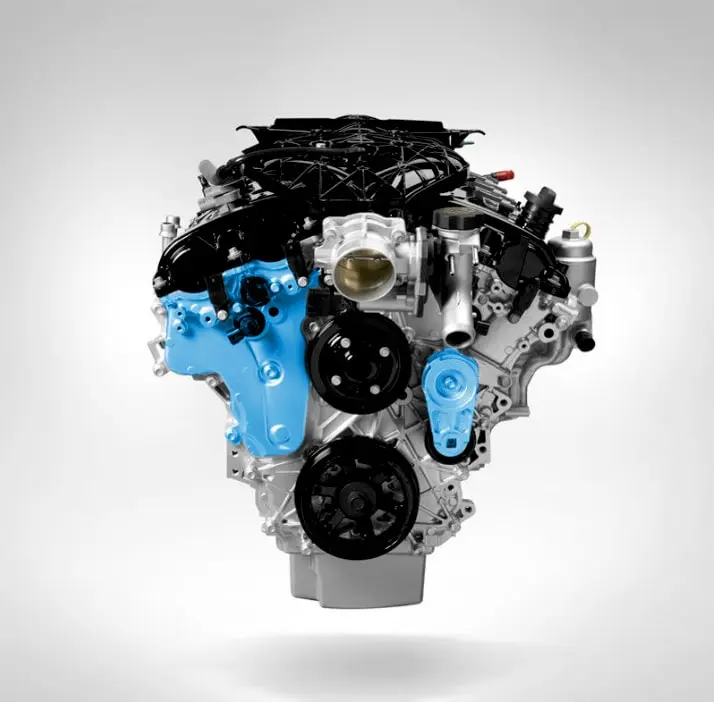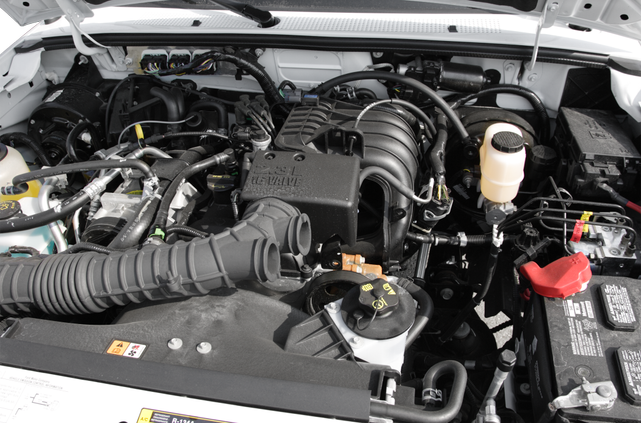Why the 2.2 Ford Ranger Engine Is a Popular Choice for Rugged and Reliable Performance
Why the 2.2 Ford Ranger Engine Is a Popular Choice for Rugged and Reliable Performance
Blog Article
Comprehending the Essentials of Automobile Engines: Types, Features, and Functions

Review of Auto Engines
An automobile engine functions as the heart of a vehicle, transforming gas right into power to move it forward. This complex system consists of various elements that operate in unison to make sure optimal performance and performance. The essential procedure of an auto engine involves the internal combustion process, where gas and air are blended, stired up, and eliminated to develop power.
The engine's style can dramatically impact its performance, gas effectiveness, and exhausts. Secret components consist of the cyndrical tube block, pistons, crankshaft, and camshaft, each playing a critical duty in the engine's overall function. The cyndrical tube block houses the cyndrical tubes where burning occurs, while the pistons transform the explosive energy from burning into linear activity. This movement is after that transformed right into rotational power by the crankshaft, making it possible for the car's wheels to turn.
In enhancement to these components, engines typically utilize numerous systems such as fuel shot, ignition, and cooling systems to enhance performance and long life. Comprehending the fundamental mechanics of vehicle engines is essential for identifying problems and executing maintenance, eventually adding to the car's dependability and effectiveness gradually.

Types of Car Engines
Auto engines can be categorized into several types based upon their design, gas kind, and functional principles. 2.2 ford ranger engine. The most typical categories consist of internal burning engines (ICE), electric engines, and crossbreed engines
Inner burning engines, which can be more divided right into gasoline and diesel engines, operate by sparking a fuel-air combination to create power. Gasoline engines are commonly lighter and smoother, while diesel engines are much more fuel-efficient and offer better torque.
Electric engines utilize electrical energy saved in batteries to power an electrical motor, supplying instant torque and no emissions throughout operation. As innovation advances, electric lorries (EVs) are increasingly becoming preferred for their ecological benefits and reduced running prices.
Hybrid engines incorporate aspects of both inner burning and electric engines, permitting versatile power resources and boosted fuel effectiveness. They can operate in numerous settings, making use of either the gas engine, the electric motor, or both at the same time.
Each sort of engine has unique benefits and downsides, influencing their application in different automobile kinds and market segments, from compact vehicles to durable trucks. Understanding these kinds is crucial for making educated choices concerning lorry choice and performance assumptions.
Engine Features Clarified
Recognizing engine functions is important for realizing just how vehicles operate successfully. At the core of any kind of interior burning engine lies the fundamental procedure of transforming fuel into mechanical energy.
The ignition occurs next, igniting the blend and developing a rapid expansion of gases. This pressure drives the piston down during the power stroke, which inevitably translates into the rotational movement of the crankshaft. The exhaust stroke after that expels the spent gases from the chamber, making means for a new cycle to start.
In enhancement to these main features, engines additionally integrate systems that take care of cooling and lubrication, making sure optimum operational temperatures and lowering friction in between relocating components. This detailed interaction of functions makes it possible for the engine to generate the power needed for automobile propulsion while preserving effectiveness and dependability. Comprehending these functions provides beneficial understanding into the intricacies of vehicle engineering and boosts the ability to diagnose and address engine-related issues properly.
Trick Engine Features
Engine design includes numerous essential attributes that substantially affect performance, performance, and resilience. One of one of the most crucial aspects is the engine arrangement, which includes inline, V-type, and level designs. Each setup affects the engine's size, balance, and power outcome, therefore influencing overall automobile dynamics.
An additional necessary attribute is the engine displacement, referring to the overall quantity of all cyndrical tubes. Bigger displacements typically generate even more power yet might compromise fuel effectiveness. Engine products additionally play a crucial role; high-strength and light-weight products, such as light weight aluminum and magnesium alloys, boost efficiency without including excessive weight.
The sort of gas injection system employed-- such as multi-port or direct shot-- influences burning performance and discharges. Turbocharging and turbo charging are features that boost engine performance forcibly extra air right into the burning chamber, boosting look what i found power outcome without dramatically raising engine dimension.
Last but not least, the presence of advanced engine management systems optimizes fuel-air mix and ignition timing, adding to smoother operation and much better gas economy. Jointly, these features specify an engine's capacities, establishing the structure for its efficiency and longevity in a competitive auto landscape.
Maintenance Tips for Engines
Appropriate engine maintenance is important for guaranteeing optimum performance and durability, as ignoring routine care can bring about considerable problems down the line. To preserve your engine effectively, begin with routine oil modifications, usually every 3,000 to 7,500 miles, depending upon the sort of oil made use of. Fresh oil lubes engine components, decreasing friction and wear.
Furthermore, checking coolant degrees is vital to stop getting too hot. Make sure that the coolant is topped up and is in excellent problem to maintain reliable temperature go to this website level guideline. On a regular basis replace and check air and fuel filters, as clogged filters can hinder air flow and gas shipment, compromising engine effectiveness.
Moreover, pay attention to trigger plugs and ignition systems. Worn or malfunctioning ignition system can result in misfiring and lowered performance. Inspecting the battery terminals and connections for corrosion is additionally important, as a weak battery can influence engine starting.

Final Thought
In recap, a thorough understanding of vehicle engines encompasses different types, functions, and crucial functions that dramatically influence vehicle performance. Inner combustion engines, along with electric and hybrid choices, show varied systems for energy conversion. 2.2 ford ranger engine. Acknowledging the important functions, such as intake and exhaust cycles, alongside critical engine features like arrangement and gas shot systems, furnishes cars and truck proprietors with the understanding needed for efficient maintenance and operation, eventually enhancing car longevity and efficiency
A car engine serves as the heart of an automobile, converting gas into mechanical power to propel it onward. The essential operation of a cars and truck engine involves the internal burning procedure, wherein gas and air are blended, fired up, and gotten rid of to create power.
Frequently inspect and change air and gas filters, as blocked filters can prevent air movement and why not check here gas delivery, endangering engine performance. - 2.2 ford ranger engine
In summary, a comprehensive understanding of car engines incorporates numerous types, functions, and essential attributes that dramatically influence vehicle efficiency. Recognizing the crucial functions, such as intake and exhaust cycles, along with essential engine functions like arrangement and fuel shot systems, gears up car owners with the knowledge essential for reliable upkeep and operation, inevitably enhancing lorry longevity and effectiveness.
Report this page